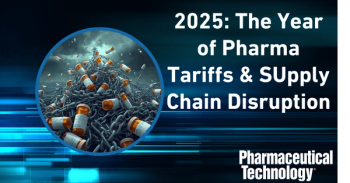
- Pharmaceutical Technology-11-02-2016
- Volume 40
- Issue 11
Tracking Potential Threats
The pharmaceutical industry has weathered its share of “black swan” events.
The industry has weathered its share of “black swan” events. Who, for instance, could have predicted the shortages of the workhorse solvent, acetonitrile, that brought so many pharmaceutical labs to their knees back in 2009? More than one event led to that shortage-a hurricane in Texas and a storm in Ohio that, simultaneously, took out 90% of the US supply-explains Charlotte Hicks, a supply-chain expert who established the web site, supplychainriskmitigation.com.
There are some basic ground rules for monitoring risks, though. For one thing, small-volume users of any material should always anticipate larger users’ needs. For instance, the oil and gas industries are major users of hydrochloric acid, so increased production will mean less material available for smaller companies, says Hicks.
In the US, she explains, conditions and supplies of natural excipients may be radically different during El Niño years. In fact, problems can be triggered by events as basic as a change in seasons. For instance, in colder parts of the country, starting in November, some supplies of water for injection (WFI) must be transported in heated trucks over the Rocky Mountains, a factor that adds cost and may affect availability.
Even the smallest company can begin to take stock of issues by using tools as basic as Microsoft Excel spreadsheets, Google maps, and Google alerts, says Hicks. “Take all suppliers and addresses and then drop that into Google maps,” she says, “to simplify the analysis and impacts of events such as hurricanes, earthquakes and geopolitical unrest.” Google Alerts can then help monitor news for all suppliers, using company names, locations, chemical names, and disasters as search terms. Technologies have been developed to help manufacturers discern, and act on, events that could trigger potential supply chain risks. RAAD360, for example, offers a program that allows companies with enterprise resource planning (ERP) systems to mine the supplier data that is already within these systems to discover specific patterns that might lead to shortages.
Other companies such as Elementum, Resilinc, and Risk Methods offer apps and software-as-a-service solutions that mine supplier risk data, examine customer data, and pinpoint potential problems. These companies put that data out on the cloud.
Article Details
Pharmaceutical Technology
Vol. 40, No. 11
Pages: 60
Citation
When referring to this article, please cite it as A. Shanley, "Tracking Potential Threats" sidebar to "Managing Risk in Raw Material Sourcing,” Pharmaceutical Technology 40 (11) 2016.
Articles in this issue
about 9 years ago
The Human Factor in Inspectionsabout 9 years ago
Application of QbD and QRM to Analytical Method Validationabout 9 years ago
Biosimilars to Drive Modern Manufacturing Approachesabout 9 years ago
Cleaning Validation in Continuous Manufacturingabout 9 years ago
Lubrication in Continuous Tubular Powder Blendersabout 9 years ago
Integrated Membrane for Single-Use Filtration Assembliesabout 9 years ago
Dual-Shaft Mixers Provide Efficient Turnoverabout 9 years ago
Biomolecule Separator Reduces Sample Absorptionabout 9 years ago
Workstations Allow for Continuous Control of Cell Culture ProcessesNewsletter
Get the essential updates shaping the future of pharma manufacturing and compliance—subscribe today to Pharmaceutical Technology and never miss a breakthrough.




